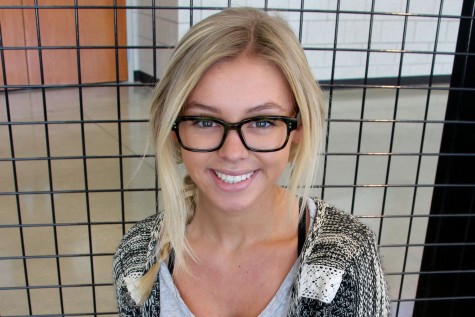Teachers of the Study Skills Class Discuss Learning Disabilities
Before moving to the Blue Valley School District, sophomore Noah Rich was told he would never make it past a third grade reading level after being diagnosed with autism. He would prove this theory wrong as he continued to succeed in his academic career.
“I have trouble reading, so [if] a teacher says, ‘You need to read a textbook page,’ it may take me double or triple time to read it,” Rich said. “And then say taking notes, I’ll just listen and take notes later cause if I try to do both, I’ll pay more attention to taking the notes than what is going on and miss half of it. Other than that I get by just fine.”
Most teachers help him by breaking down the lessons and progressing slowly over difficult topics; however, some teachers are not as understanding or do not even realize he has a disability. But the real key to his success has been getting the extra help he needs in a class called Study Skills.
In rooms 206, 307 and 509, not only are lesson plans being taught each day, but students with learning disabilities find themselves in a safe environment where they are taught testing skills, problem solving and social skills that they will carry with them into the next stages of their lives.
Kathyann Christenson, Lynda LaPlant and Leann Voor Vart all teach Study Skills, a class where students with learning disabilities such as dyslexia, attention deficit hyperactivity disorder and autism, receive help on anything, ranging from daily homework assignments and projects to long term goals.
Students in these classes have an Individual Education Plan (IEP), a legal document recognized by the government that indicates that the students need assistance in order to be successful in the classroom.
“Many of the students [with learning disabilities] in this school that have an IEP are enrolled in special education of some sort, but you would not be able to pick them out of the crowd or in your classroom because they have successfully been able to come up with things that help them in the classroom,” Voor Vart said. “I do feel that for a lot of those students that you may not notice it, but they generally have to work harder to be as successful as someone who does not have a disability.”
On an ordinary day in Study Skills, students usually have time to get help with lessons or homework that they may need to go over a second time. Christenson’s room is always busy with students working.
“People are at individual tables unless they are doing a group activity,” Christenson said. “I would either be sitting at a table with one student or going over grades with another or checking to see how they are using the computer as far as if there are any kind of programs that they need to use for studying.”
Voor Vart’s class is very much the same — checking up on her students’ grades, helping them to stay organized and helping to peer edit papers. Some of the challenges Voor Vart faces are having to plan success on an individual’s needs.
“The most challenging thing is when you try things that you really think should work because they might have worked for others, and then they don’t work for a student,” Voor Vart said. “So you really have to be really flexible and be willing to try new things, and in a class where I’m teaching five or six different kids strategies, that might mean five or six different lessons for each of those kids.”
Although Christenson, LaPlant and Voor Vart said some days may be harder than others, they look forward to going to work and helping their kids to become better students.
“I just love working with students who learn differently — sometimes they are the most creative and think the most outside of the box,” LaPlant said. “I enjoy that I really get to know my students because we talk so much about everything that is going on in their lives.”
Christenson said she thinks that Study Skills is not just a class for students to learn studying tactics, but a place for them to really grow and discover themselves as students.
“I think the biggest thing is to get students to really know themselves [better] and how they learn and retain information and the difference between short term and long term memory study skills,” Christenson said. “Basically how to study and what is effective for them — just trying to make it individual.”
All three teachers said that their classrooms are different than other rooms across the school. As they have their students all four years of high school, the teachers are able to build strong bonds and teach life lessons that wouldn’t be taught in any other classroom.
Just because their students have learning disabilities does not mean that they cannot receive an A+ in algebra or score the game-winning goal at their soccer tournament.
“They have to be very resourceful,” LaPlant said. “They are just as intelligent and as smart as everyone else — they just do things a little differently.”
Many students in the Study Skills class did not wish to be interviewed for this story. Teachers of this class feel the reason for this is that their students don’t want to stand out or be labeled for having a disability. They want their privacy just like other high school students.
“These students are just like everyone else,” Voor Vart said. “Sometimes they need a little extra help with test strategies, editing or even organization. But who couldn’t?”


